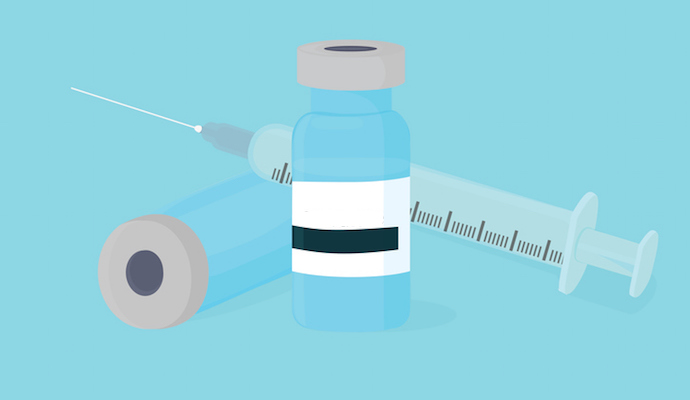Opioid Overdose Care Totals $1.94B in Annual Hospital Costs
Opioid overdose patients would add about $11.3 billion to the US healthcare system based on current hospital costs data, Premier reported.

Source: Thinkstock
- The opioid crisis is hitting hospital costs, a recent analysis by healthcare improvement company Premier uncovered.
Approximately $1.94 billion in annual hospital costs were attributable to patients who experienced an opioid overdose between October 2017 and October 2018, the analysis of 647 healthcare facilities showed.
“Opioid addiction has been a public health problem for some time, but we’ve yet to show exactly how hospitals – the entities that treat most of these patients – are financially impacted,” stated Roshni Ghosh, MD, MPH, Vice President and Chief Medical Information Officer at Premier. “This analysis shows that on top of losing family members and friends to this epidemic, it’s costing consumers and taxpayers, as well as hospitals.”
“There is an urgent need to provide health systems and emergency caregivers with frontline solutions that they can use to stem the tide of opioid addiction in our communities,” Ghosh stressed.
Hospital costs were concentrated among almost 100,000 opioid overdose patients with nearly 430,000 total emergency department, inpatient, and other care setting visits during the period, Premier reported. Care in the emergency department alone totaled over $632 million in hospital costs.
READ MORE: New Alternative Payment Model Tackles Holistic Addiction Recovery
Additionally, almost one-half of patients (47 percent) were treated and released, while 53 percent were treated and admitted. Treating and releasing patients could add to long-term healthcare costs, but even those who were admitted post-emergency department treatment incurred high costs, the analysis showed.
The average hospital cost of an overdose patient who was treated in the emergency department and released was $504, but the average increased to $11,731 for patients treated and admitted.
Furthermore, about 40 percent of the opioid overdose patients admitted experienced organ failure. Adding in costs for intensive care, the average cost of an overdose patient treated and admitted rose to $20,500.
Opioid overdoses relied on public health insurance programs to cover their hospital costs, Premier also found. About 66 percent of the patients had public insurance coverage (33 percent Medicare and 33 percent Medicaid), 16 percent had a private payer, 14 percent were uninsured, and three percent were covered by other healthcare programs like workers’ compensation.
An extrapolation of the hospital cost data showed that opioid overdose patients would add about $11.3 billion to the healthcare system each year, or one percent of all hospital expenditures. And if payer mix remained constant, Medicare and Medicaid would bear $7.4 billion of the expenses.
READ MORE: AMA: Eliminate Prior Authorization for Opioid Abuse Treatment
The opioid crisis is having a profound impact on the US. Approximately 68 percent of the more than 70,200 drug overdoses in 2017 involved an opioid, and about 130 Americans die every day from an opioid overdose, the CDC reports.
Hospitals are at the frontline of the crisis, caring for opioid overdose patients and making treatment and admission decisions for them. While providing high-quality substance abuse and addiction care is always at the top of each provider’s mind, hospital budgets are also feeling the strain from the opioid epidemic according to the recent analysis.
To deliver high-quality, lower-cost care to opioid-addicted patients, providers and other healthcare stakeholders have been busy looking for answers. One of the solutions may be alternative payment models (APMs).
APMs offer an alternative to fee-for-service, which incentivizes more care rather than quality care. Through the models, providers receive value-based payments stemming from the type and cost of care they provide to patients, as well as patient outcomes.
Stakeholders have found opioid abuse and addiction services are ripe for APMs.
READ MORE: Hospital Costs Fall Despite Overall Healthcare Spending Growth
“The current physician reimbursement structure does not account for all the services that patients with an opioid use disorder need to progress to successful treatment and recovery,” explained Shawn Ryan, MD, MBA, ABEM, ABAM, FASAM, Chair of the American Society of Addiction Medicine’s (ASAM) Payer Relations Committee.
To address the challenge, ASAM recently partnered with the American Medical Association (AMA) to establish the Patient-Centered Opioid Addiction Treatment (P-COAT) APM. The model will offer value-based payments to providers who offer office-based opioid addiction treatment involving the use of buprenorphine or naltrexone consistent with the ASAM Criteria or other equivalently evidence-based standards.
The largest financing mechanism of opioid overdoses, CMS, has also proposed several APMs. In an August 2018 announcement, the federal agency called on local stakeholders and Medicaid agencies to develop an APM that will address the impact of the opioid crisis on children.
The Integrated Care for Kids (InCK) initiative is “a child-centered local service delivery and state payment model aimed at reducing expenditures and improving the quality of care for children covered by Medicaid and the Children’s Health Insurance Program (CHIP) through prevention, early identification, and treatment of priority health concerns like behavioral health challenges and physical health needs,” CMS explained.
The federal agency also announced up to $64.6 million in funding for 12 state Medicaid agencies that develop Medicaid reimbursement and care delivery strategies for maternal opioid misuse treatment. The awards will be part of the five-year Maternal Opioid Misuse (MOM) model, which is slated to launch in the fall of 2019.
